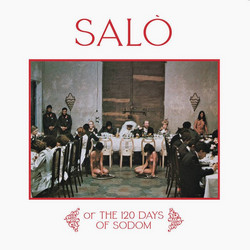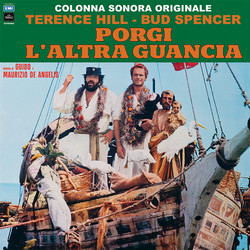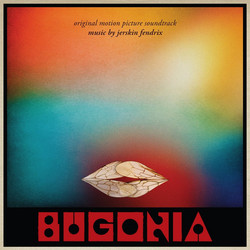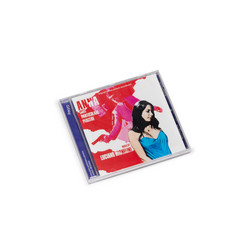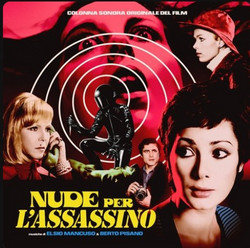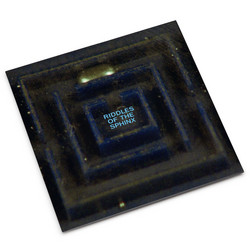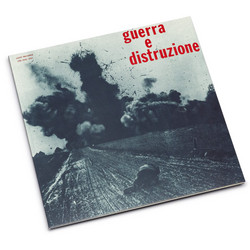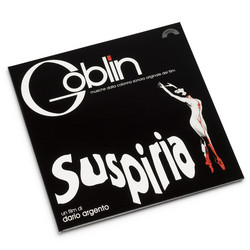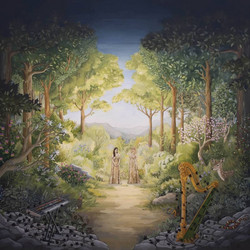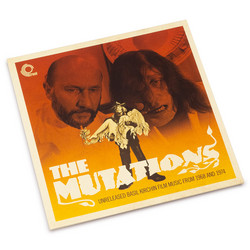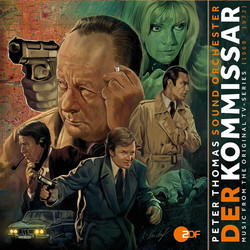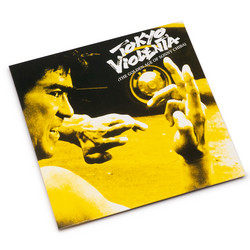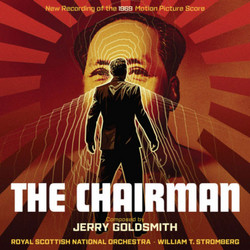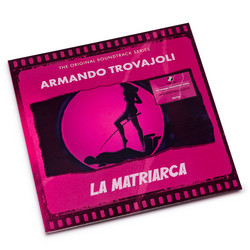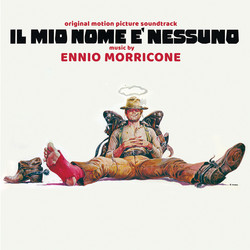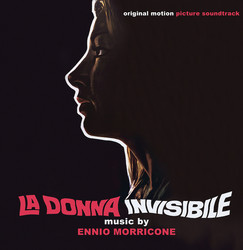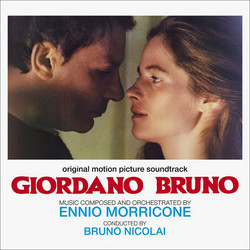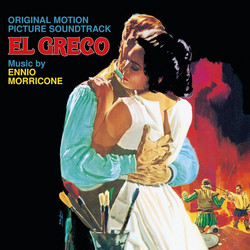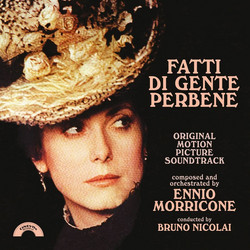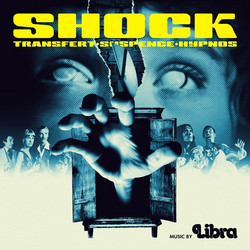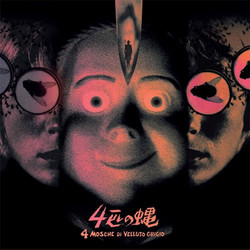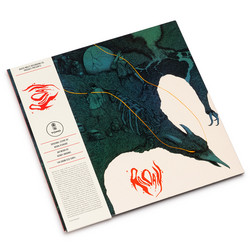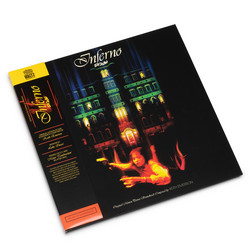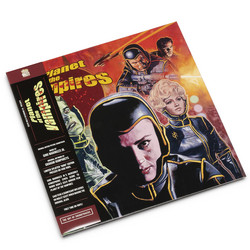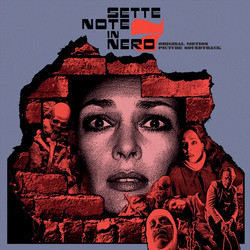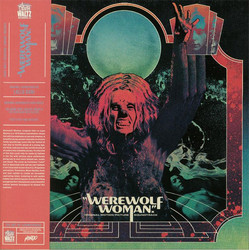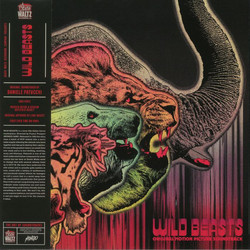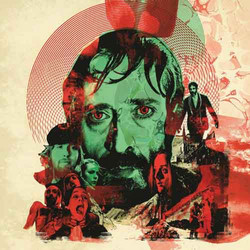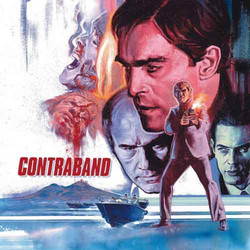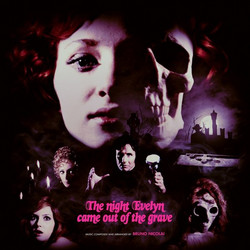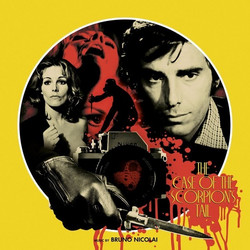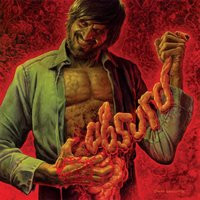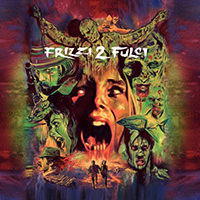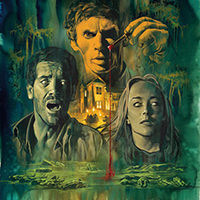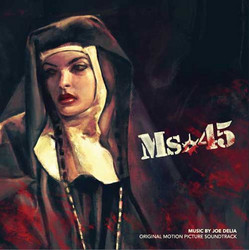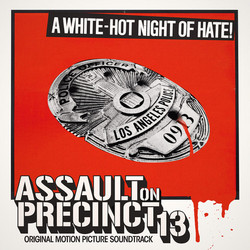We do require your explicit consent to save your cart and browsing history between visits. Read about cookies we use here.
Ennio Morricone
L'Uccello Dalle Piume Di Cristallo (2LP)
Label: Death Waltz Recording Company
Format: 2 LP crystal clear
Genre: Library/Soundtracks
Out of stock
* 2LP edition, Features 10 previously released tracks. Mirrorboard gatefold sleeve, obi strip. Crystal clear vinyls *Fanatics of '70s Italian giallos take note… Behold a veritable smorgasbord of sounds that is Ennio Morricone’s score to Dario Argento’s debut film, The Bird with the Crystal Plumage (a.k.a. L'uccello dalle piume di cristallo) from 1970. Considered one of the genre’s gold standards, Maestro Morricone’s stunning sonic work is a masterful accompaniment to the knife-wielding images on the screen. This colorful (yet dark) score features il Maestro’s trademark scat vocal harmonies, beautiful melodies, and mandatory sinister themes – perfect musica for this wonderfully stylistic giallo masterpiece.
The first of Argento’s “animal trilogy” series, the music on The Bird with the Crystal Plumage is a lovely mix of string-infused bossa, to tenser and instrumentally sparse passages that Morricone does so well. Just be sure to handle the piumaggio cristallino with care… we suggest wearing your black gloves.
Spaghetti-thriller, Italiano giallo or Dario Argento ‘s thrilling. Names of a movie phenomenon that, in the late sixties, was claimed on the screens, generating a cult following of overseas imitators. A fascinating interlude of Italian cinema, sometimes dismissed as mere commercial digression, but rich in stylistic innovations and, above all, of notes. It is “L’Uccello Dalle Piume Di Cristallo” (1970), the first episode of the so-called ‘animal trilogy’ by Roman director and screenwriter, to give a real turning to the genre in Italy, diluting the basic features that until then he had been characterized, like the gothic stories of Anglo-Saxon derivations or those focusing on more complex and intricate family plots. Dario Argento, art son, former film critic, follows on the heels of Mario Bava, whose seminal “La Ragazza Che Sapeva Troppo” (1963) and “Sei Donne Per L’Assassino” (1964) are kept in mind while shooting “L’Uccello Dalle Piume Di Cristallo”. Thus began a cycle in celluloid, marked by bizarre titles containing names of mammals, insects and reptiles. And, above all, dominated by the madness of the characters on stage. In addition, the director captures the terror element inaugurating a very personal film language, with particular attention to technique. The image takes on a different value, expand the nightmarish sequences, the crimes are transformed into frightening rituals, the rate of violence grows movie after movie. The presence of the murderer is rendered by the frequent use of the subjective, which allows a complete identification by the viewer. The camera is calibrated to grasp, then, every detail of the killer accessories, dark from raincoat to latex gloves, up to reveal his deadly weapons, knives and daggers of all types and sizes. The murderer of “L’Uccello Dalle Piume Di Cristallo” is the first in a series of psychopaths who, albeit significant variations, will dominate in Dario Argento’s giallo and thriller movies later as, for example, “Il Gatto A Nove Code” (1971), “4 Mosche Di Velluto Grigio” (1971) and, especially, “Profondo Rosso” (1975), perhaps the title more representative of eager seventies of the twentieth century. The intuitions of the talented filmmaker will direct content and forms to new fees, which become the constant in the following productions at the four corners of the globe. One of the keys to his success is being able to capture and to impress on film citizens turmoil and fears, already bewildered by contemporary events, primarily terrorism. The protagonists of his stories are not intertwined in the world of politics, or at the most politicized, but alienated and isolated in the town as leaden as sinister - which seems to be no apparent way out - and, of course, hunted by assassins of many resources. The atmosphere of carefully dotted nightmare does not end, moreover, in just sordid frames, but only ends at the end of the movie itself. The story of “L’Uccello Dalle Piume Di Cristallo” begins in Rome when, one night, an American writer is a witness to an attempted murder. While walking on the street, through a large window, he witnessed a scuffle between a woman and a person dressed in black inside an art gallery. His adventitious presence forces the mysterious individual to flee. Although he has provided his testimony to the inspector, the man realizes that is forgetting an important detail to the detection of the maniac. The aggression against women is, in fact, due to some heinous crimes that shocked the tranquility of the capital. The writer decides to initiate investigations on his own, but ends up in the crosshairs of the crowds, who will try to kill him. Dario Argento forces as an ordinary person to become a hunter and prey to a killer often haunted by a childhood trauma, evoked by the sight or by the discovery of an object, which will cause new bloodshed. A psychoanalytic tract that, with both creative and unheard ways, will become one of the real leitmotiv of the international giallo-thriller genre. Another compelling idea of the director is assigned to the woman figure a dual role: not only passive, as designated sacrificial victim, but also active as ready to kill prey to her troubles. Finally, the power of music. Since his early days, besides narrative and visual features, it is essential the soundtrack, evocative and experimental, signed by Ennio Morricone. On the set of “Metti, Una Sera A Cena” (1969) by Giuseppe Patroni Griffi, he mets screenwriter Dario Argento, whom he will work for five films. The success of the first three established him as musical symbol for similar products. His name will be heavily demanded by the followers and the imitators of the director and, at the end of the Seventies, his discography will count about thirty titles for Italian ‘blacks worlds’ cinema. Despite the low playing time, in an atmosphere of growing fear, the songs composed by the Maestro have been imposed to the attention of the audience, stealing, if listened to a higher volume, the scene to the actors themselves. To the main themes, melodic, repetitive and identificative, Ennio Morricone has often flanked sublime atmosphere, erroneously judged ‘minor’ by some critics. Tracks able to keep the tension high during the actions of the characters, connoted by the playing of instruments used out of context to characterize grotesque and horror or, partly, superimposed on the vocals of soprano Edda Dell’Orso. A sound influenced by free jazz experiments of Gruppo Di Improvvisazione Nuova Consonanza. In Dario Argento’s giallo-thriller movies, it seems to be a double aesthetic-musical line in order to make the traumatic music connoting the Evil, or the antagonist, and the harmonica, the Good, or the protagonist. And the soundtrack of “L’Uccello Dalle Piume Di Cristallo” completes the evolution of random language emerged during the score composing for “Un Tranquillo Posto Di Campagna” (1968) by Elio Petri, different from that of “Indagine Su Un Cittadino Al Di Sopra Di Ogni Sospetto” (1970). The abstract film score is composed of unrelated structures for each instrument, sequences of a number of lines, representing a range of possibilities including the executor, called to participate in the process of composition, must make a choice. Master of a precise technical gesture, the conductor, Bruno Nicolai, organized each receipt, adapting the musical events to the content of the scenes. Every execution has been a unique example, for a final outcome so memorable as oblique. The mixing of dark strings, winds and other dissonant sounds - grunts, erotic voices, creaks, thumps, chimes, vibraphone and bells interventions - delivered to posterity an ‘overwhelming’ listen opposed to the main theme tune. The tracklist of “L’Uccello Dalle Piume Di Cristallo (The Original Motion Picture Soundtrack)” (1998) is therefore characterized by the handful of useful effects to feed constantly suspicious of the actors and the morbidity of the movie, marked by the main theme, Piume Di Cristallo, including melodic choruses and disturbing sighs, a lullaby on the piano for female voice. A song that comes back, then, several times throughout the film and, in a more melodic version as Violenza Inattesa, on the occasion of its opening credits. The track ‘traumatic’ is, however, Fraseggio Senza Struttura, a flood of dissonance that, little by little, evolves into separate atmospheric contributions - as Svolta Drammatica, La Città Si Sveglia, characterized by an acid trumpet in the background, or Silenzio Nel Caos - to mark killer’s criminal deeds. His moans are at the center of the title-track, L’Uccello Dalle Piume Di Cristallo, useful to celebrate also the ‘crane snow’, a volatile non-existent in reality. After that, the strong jazz of Corsa Sui Tetti and lighthearted rhyme Se Sei Stonato. The previous Non Rimane Più Nessuno an extraordinary example of bossa. Yet the professional relationship between Dario Argento and Ennio Morricone did not seem to start with the right foot, or rather the record. “We met at his house and naively - the director recalls in his autobiography “Paura” (2014) - I brought a lot of vinyls, suggesting to listen them: they contained some pieces that seemed interesting. He offended, but then realized that my gesture was in total faith. What a fool”. The successful soundtrack has known several editions in time, including those for the foreign market, “L’Uccello Dalle Piume Di Cristallo” respectively by Capitol Records (1970) and Cerberus Records (1981). The rights for the peninsula, instead, are always in the hands of the Cinevox, with the record distributed first on vinyl (1971), then as cassette (1983) and, subsequently, even in compact discs (1998). A new look, and the stereo premiere of the tracks, the news of the latest cd version (2008). Some years ago came also the first vinyl reissue (2014), signed AMS, with the cover finally dedicated to the infamous Hornitus Nevalis, plus notes by Fabio Capuzzo and the opportunity to choose between a black or, inevitably, red vinyl.
L'Uccello Dalle Piume Di Cristallo (The Bird with the Crystal Plumage,1970) was the debut of director Dario Argento, who had previously made valuable contributions as a writer to films, of which some were scored by Ennio Morricone (C'era una volta il West, Metti, una Sera a Cena,Comandamenti per un Gangster...). The film continued the genre of Giallo films, which is foremost a murder mystery surrounding a serial killer, with elements of horror and eroticism, visually baroque and much more bloodier than usual. Another element that defined the genre is a typical kind of music. Ennio Morricone had previously scored one horror film, Amanti d'oltretomba , and one Giallo called Un Tranquillo Posto di Campagna in 1968. L'Uccello Dalle Piume Di Cristallo was the first of the Argento´s Animal Trilogy, followed by Il Gatto a Nove Code (The Cat o' Nine Tails, 1971) and 4 Mosche di Velluto Grigio (Four Flies on Grey Velvet,1972), all aided by wonderful scores of the composer. Due to a dispute with the producer of these films, the father Dario, who felt all the music of the trilogy sounded the same, Morricone wasn´t asked for other films, replaced by other excellent composers such as Golbin, Pino Donaggio and Giorgini Gaslin. However, it wasn´t until La Sindrome di Stendhal (1996) and Fantasma dell'Opera (1998) he was reunited with Dario Argento.
Ennio Morricone has been known for a lot of beautiful themes, righteous pathos, creative ideas and typical dissonance and much more. I think he truly excelled the most in the genre of horror, like a lot of other Italian composers, especially in the 1960´s and 1970´s. In the beginning of the Giallo films the music was rather conventional in its approach, anonymous at times, while slowly beginning to adopt the elements it was famed for. Groovy, laid back melodies and female wordless vocals were the first to enter, but things significantly changed gear when Morricone joined The Gruppo Di Improvvisazione Nuova Consonanza. It did not only take their experiments to a whole new level, embracing a broader musical texture, but their influence became apparent in film music. The landmark score is without a doubt Morricone´s Un Tranquillo Posto di Campagna (1968), for which he introduced the group in experimenting for a score. The result was arguably the most exciting and insanely funny Giallo score ever written, with a lot of original ideas and innocent wordless singing by Edda Dell'Orso. The offbeat and dissonant banjo, crazed whistled, vocals, offbeat strings and other elements created an appropriately rural sound, it kind of sounds like a dissonant score for a cartoon. Never again has any composer been able to write an overall more creative Giallo score than Morricone did for this film. Bizarrely, it has never received the praise it deserves, even though a local Italian restaurant holder, of all people, agrees with me completely. Surely, a lot of standalone or even multiple cues from a variety of Morrcone scores capture the dissonant brilliance, but percent wise they form a minority. I sometimes pity the fact that the harmonica dissonance of L'Ultimo Treno Della Notte, which is rather brilliant, is too repeating and lacks more daring and varied use.
L'Uccello Dalle Piume Di Cristallo became the film that did not only redefine the genre, but also introduced the much famed standard for such scores Giallo music is usually best described as a unique mixture of groovy/jazz/lounge, creative dissonant experiments, female wordless vocals and soothing and erotic lyricism.. The experimental parts of these scores usually became an element of surprise in the sub genre, while similarly creative ideas were put into effect in a lot of the 'common' Italian horror scores of that time.
L'Uccello Dalle Piume Di Cristallo employs the talents of Edda Dell'Orso to perform the mother of all la-la-la scores. The use of such vocals became a vast component of Giallos and spread to other genres, but the composer certainly did not invent them. In the opening cue,Violenza inattesa (04:08), her la-la-la settles for a nice lullaby theme, sometimes with a sudden gear change, accompanied by a male voice and groovy element. It gives the score a rather soothing and strong theme of innocence and warmth, while the wind chimes give it just enough of an unsettling, appropriate crystal feel on the background. There´s even a great bossa nova style cue and, off topic, a drinking song (Se sei stonato). Other places use variations of her singing, with different nuances, pace, or preserving pauses and echoing her voice. The most iconic are the breathing tones, hissing, moans and especially the moments that sound erotically arousing, which is evident in a brilliant orgasm cue L'uccello dalle piume di cristallo (01:23). In this cue, we hear Edda groaning and moaning sexually, supported by the sound of a heartbeat that ends with her voice reaching an orgasm. The wide range of her voice, as described above, also mixes well with the experimental dissonance.
Dissonance and idiosyncratic ambience are remaining key words that define this Giallo score. After having heard countless of (Italian) scores that rely mostly or partly on dissonance, portions of the score to L'Uccello Dalle Piume Di Cristallo may seem rather conventional at first. I have become to understand that within the greater scope of his career, some of the scores that rely much on dissonance, really lack the true creativity of works such as L'Uccello Dalle Piume Di Cristallo. Rarely do any of the maestro´s scores become pure experiments of dissonance and abstractness. Ecco Homo is the only score I can think of. Then again, this particulair score isn´t as challenging as dissonant portions of other ones. For the greatest endeavors, some of his chamber works and ´Gruppo´ music are highly recommended.
For the score he surrounded himself with the members of Gruppo, seeing the film and simultaneously trying to react to it musically, experimenting. It explains the chaotic sense of the music and how the music sounds. Corsa si Teitta is a very good example of that. It mixes frenetic drum solos, percussion, harpsichord , sharp tones of brass, offbeat strings, excelled echoing la-la-la and moaning vocals, to such an extent it becomes a unique and nightmarish composition. The wind chimes, with its appropriate glass-like sound, is another element that gives the score a personality of its own. The unsettling sound easily interchanges between cues with a more soothing sound and the experimental pieces.
L'Uccello Dalle Piume Di Cristallo is a notable score seen from its iconic status for a Giallo, which I rarely take into account for my final verdict. Status is such a subjective thing and I don't care much for it, and rarely agree with it. It is not one of his very best, but it is extremely close. Yet, I feel a '' one in a million'' comprise is very much deserved for this almost perfect musical work. The Cinevox 36 minutes and expanded release are the two cds I would recommend most of all.
Related products
More by Ennio Morricone
More from Death Waltz Recording Company
Become a member
Join us by becoming a Soundohm member. Members receive a 10% discount and Free Shipping Worldwide, periodic special promotions and free items.
Apply hereSoundohm is an international online mailorder that maintains a large inventory of several thousands of titles, specialized in Electronic/Avantgarde music and Sound Art. In our easy-to-navigate website it is possible to find the latest editions and the reissues, highly collectible original items, and in addition rare, out-of-print and sometime impossible-to-find artists’ records, multiples and limited gallery editions. The website is designed to offer cross references and additional information on each title, as well as sound clips to appreciate the music before buying it.
Soundohm is a trademark of Nube S.r.l.

